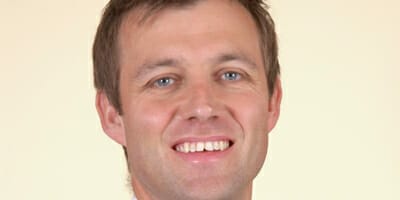The $91 billion Australian Future Fund’s approach to investing is to get even more sophisticated as it borrows ideas and techniques from other investors, including the risk management and portfolio construction techniques of multi-strategy hedge funds. David Rowley speaks to CIO David Neal.
Many will quickly tell you there is greater return to be made from smart asset allocation than from manager selection, but few investors will jump to expand on this theory the way the Future Fund does.
The journey down that path has been so rewarding it is encouraging them to take what David Neal describes as the “most exciting chance” facing his profession.
For Neal, strategic portfolio construction is typically done at too high a level. For example, he says an allocation to property that is split 60 per cent Australian and 40 per cent international is like taking a view of the world at 20,000 feet. To him, it can be done on a more granular basis.
Current state of play
The Future Fund’s process is to seek the most interesting risk-adjusted return opportunities available anywhere. The goal is to build a total portfolio from these best ideas. So, diversification of risk is sought across the whole portfolio rather than within an asset class.
Opportunities are often sub-sector themes – such as multi-family property or opportunistic energy-related infrastructure in the US.
Each such theme is examined for the levels of premia it delivers from equity risk, illiquidity risk, credit risk, inflation risk and real yield exposure.
This enables it to be compared like-for-like on a risk-adjusted basis with an opportunity in other sectors which are competing for the same capital.
Neal believes there is another level of analysis it can reach. He describes this process as determining the “systematic generators of value”.
For example, this would entail asking of a potential private equity investment, how much of it is a small cap bias? How much of the return comes from leverage? How much value is added from buying off-market?
“Doing that across the portfolio would be interesting to understand the risks a bit more and could lead to a further evolution in our investment philosophy,” he says. “We are not there yet, but that is part of the research we want to do. To get finer grained in understanding our portfolio’s risk exposure. The challenge of looking across all those opportunities, which are totally disparate, and making a decision on where to put the marginal dollar, is significant.
It’s a different way of constructing the portfolio and demands a quite different combination of skills and mindset for an investment team. It is one of the most exciting challenges for the asset-owner profession,” he says.
Neal contrasts this with a more broad-brush approach. “Comparing property and equities in terms of their 10 year characteristics is not the same thing as comparing that building versus that airport versus something else,” he says.
He admits that many aspects of this thinking have been informed by studying others.
He is impressed, for example, with the risk management and portfolio construction techniques of multi-strategy hedge funds.
“We have this incredible privilege of being exposed to the best investors in the world all the time,” he says. “One of the most fascinating things about my job is to get exposure to those and reflect on them, so ‘why are those people doing it that way? That is not the way we do it. See whether there is a tweak or an overhaul required in the way we do it.”
Professionalisation
Neal says new thinking such as this is part of the growing speed of improvement by institutional investors, a process which he likens to professionalisation. The way the very best Australian, Canadian and European funds have shared ideas over the last few years is a key contributor to this change.
Neal says until recently the global institutional fund management industry did not face the same commercial pressures that force private sector businesses to constantly evolve and question their activities.
Low performance, he says, did not mean you went out of business, and change happened slowly.
“It feels to me that the cadence of the asset-owner industry change, especially here in Australia, has really picked up now. You are starting to see much more activity,” he says.
One mark of the need for change was the poor way funds communicated their risk tolerances to fund managers, leading to inefficient relationships and funds often not knowing what they were buying.
“You had investment managers doing their thing very close to markets – very sophisticated, very highly paid, lots of information,” he says.
“Then you had [people within] funds who were quite distant from that; they were not full time, not well paid not that sophisticated from an investment sense; so you had a marked asymmetry in the relationship.”
Neal says the Future Fund, like many other institutions, has sought to narrow the gap. This means being closely engaged with fund managers to the point that they can test, challenge and explore opportunities and drive genuine alignment of interest.
Management style
The Future Fund’s processes are run by a 40-strong team that sticks to tailored principles to work as one. For a fund of its size, this is quite a lean team.
The philosophy it follows is termed “one team, one portfolio” and as part of this, all new investment ideas are debated against each other regardless of asset type.
Moreover, performance remuneration is determined on the basis of performance for the fund as a whole, rather than reflecting the performance of individual asset classes.
Underneath the board the key investment decision-making body is the investment committee which includes the sector heads of each asset class together with the CIO, managing director, director of emerging markets and director of strategic risk management.
Each sector head is responsible for coming forward with their best current ideas and to say what they like and don’t like about their current portfolio.
This is also reflected in the other decision-making structures that are used to assess, filter and review opportunities and existing investments.
It is “an incredibly stimulating environment”, says Neal.
Professionals are exposed to the full breadth of opportunities beyond their own specialism – for example, those in the listed equities team find themselves on the asset review committee understanding the detail of buying a property or an infrastructure asset.
Also, if a sector head has an under-performing contributor to the overall portfolio they are encouraged to get rid of it, rather than empire building.
“Everyone came in on the basis of the contest for capital between ideas and not between people,” Neal says.
People management
When asked whether the process could be prone to individuals using psychological technqiues to subvert, perhaps by getting their ideas chosen over others, Neal replies “absolutely”. He uses the same word in reply when asked whether certain personality types would be better off in another organisation.
“You do not want people who are in it for themselves,” he says.
Similarly, this team-based system will not work if members only offer praise to their colleagues, perhaps as a means of gaining favour or promotion.
“It is a balance between being a real team player and sometimes telling your colleagues that they have got it wrong – and you need to tell them fast frankly and openly,” Neal says.
“The person receiving that information needs to be a team player in the sense that they say ‘thank you for telling me that – I appreciate that, I will go away and think about it some more’.”
He caveats this quickly by stating it does not always happen as sweetly as that, but it is the fund’s aspiration. And if it does not always go down well, it is better than having team members feel like they cannot be bothered to raise concerns.
Neal says that so far this approach has worked pretty well but that it requires ongoing attention and effort, and it means the organisation puts a premium on finding good cultural fit in recruitment.
A more extreme version of this approach comes from global hedge fund giant Bridgewater Associates, which has around 240 business principles in handbook written by the founder and CIO, Ray Dalio. It’s compulsory reading for all staff. (link)
Neal describes this as “an extraordinary codification of a culture and process” and the encouragement of “incredibly frank feedback all the time”, which he admits is challenging for most people, but shows the importance of clear rules of engagement if you want to get to the top.
(A 2011 New Yorker article on Bridgewater gives a good insight.)
Neal’s place in this structure is not that of a typical chief investment officer.
Indeed he suggests that the notional roles of chief risk officer and chief culture officer are more important aspects of his role at Future Fund.
“I would consider myself primarily the engineer of the process and the culture,” he says. “The team does the investing – they are the smart people going and finding great opportunities. A big part of my role is that of chief culture officer – a monitor of the rules of engagement.”
Distractions
Neal has helped create a finely tuned machine and he is grateful for the brief the Future Fund has not to manage assets in house, other than some infrastructure assets.
“Different funds have different approaches and contexts when it comes to in-house management versus an outsourced approach,” he says. “For us, we see a particular advantage in focusing on the total portfolio while bringing our investment expertise to bear through deep relationships with our external managers. It helps us avoid getting dragged in to implementation issues in a way that can be distracting and take us away from what we believe we really need to think about.”
He acknowledges the model is more expensive but it is also part of the distinctive approach to investment and provides a comparative advantage.
This is useful, for example, in an analysis of the current investment outlook, in which he says his fund is positioned neither aggressively or in defensive mode.
“We spend a lot of time making sure we have the best possible understanding of the context that markets are operating within,” he says.
Neal believes the current market, which he acknowledges has large structural imbalances caused by quantitative easing in the US, Europe and Japan, is “reasonably” supportive for asset prices.
“We are neither aggressive or very defensive. We are not afraid of investing in this environment,” he says.
Not that he is over-confident, he realises the weaknesses in the system could easily lead to markets dropping back again.
In the meantime, the fund is taking the keenest looks at the best opportunities given the environment.
“We want to be sold to by people who have great ideas. The life blood of good investing is good ideas,” he says.



